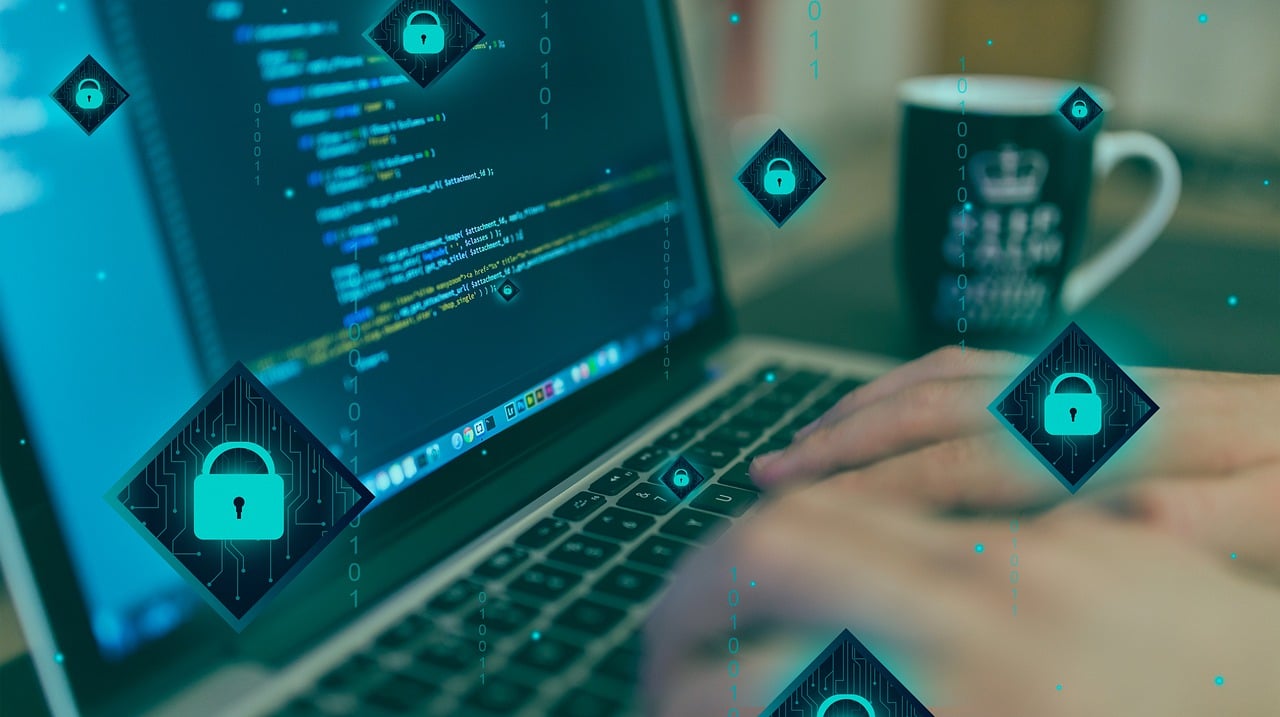With the swift transition into the digital realm and the recognition of data as a valuable currency, the allocation of resources to cybersecurity is becoming an ever more crucial aspect of a country's economic framework.
Gartner Inc's projections anticipate a global surge in end-user spending on security and risk management, reaching $215 billion in 2024. This reflects a notable 14.3% increase from the projected $188.1 billion expenditure in 2023.
Despite the flourishing industry, a substantial obstacle emerges: the cybersecurity skills gap. Projections suggest that by 2024, there will be over 1 million available cybersecurity positions, while the number of adequately trained professionals is expected to fall short at fewer than 400,000. This disconcerting gap presents a significant threat, compelling organizations to grapple with the challenges of recruiting and retaining cybersecurity talent.
Within this article, we will delve into the top 10 cybersecurity roles anticipated to be in high demand come 2024.
Information Security Analyst
An Information Security Analyst is a responsible person for protecting an organization's computer systems and networks from security breaches and cyber threats. They play a crucial role in safeguarding sensitive information, ensuring the confidentiality, integrity, and availability of data.
Responsibilities:
- Continuously monitoring network traffic, security logs, and data sources to detect and respond to potential incidents.
- Identifying, analyzing and patching potential risks, vulnerabilities in software and systems, and predicting impacts.
- Creating, implementing, and maintain a robust defense system using firewalls, antivirus programs, and encryption tools.
- Responding swiftly to security incidents, investigating and mitigating damage while coordinating with relevant parties.
- Developing, enforcing and ensuring security policies.
- Conducting regular security audits to assess effectiveness and maintain compliance with regulations.
Information Security Architect
An Information Security Architect is a responsible person for designing and implementing secure information systems within an organization. They focus on creating a comprehensive and resilient security architecture.
Responsibilities:
- Developing and designing the overall security architecture for information systems.
- Conducting risk assessments to identify potential threats and vulnerabilities.
- Developing strategies for risk mitigation and management.
- Implementing and enforcing security frameworks and standards.
- Integrating security measures, including firewalls, encryption tools, and access controls, into the overall infrastructure.
- Developing and implementing incident response plans to address security incidents promptly and effectively.
- Developing and updating security policies and procedures to ensure compliance with industry standards and regulations.
- Establishing and maintaining security governance structures to ensure ongoing adherence to security standards and policies.
Cybersecurity Engineer
A Cybersecurity Engineer is a responsible person for implementing and maintaining security measures within an organization's information systems. They focus on protecting networks, systems, and applications from cyber threats.
Responsibilities:
- Planning, deploying, setting up, monitoring, and enhancing security tools, technologies, and solutions to protect the integrity of an organization's data, networks, and systems.
- Conducting routine vulnerability assessments to pinpoint weaknesses within systems.
- Configuring and installing firewalls and intrusion detection systems (IDS)
- Promptly responding to data security incidents
- Performing penetration testing
- Conducting network maintenance
- Creating and executing incident response plans to handle and recover from security-related events.
- Monitoring and implementation of security updates to both systems and software in order to rectify vulnerabilities.
- Consistently observing network traffic and security logs to detect and respond to potential security incidents across all facets of system and/or network security.
- Implementing and monitoring endpoint security solutions to safeguard individual devices and maintain a secure computing environment.
- Ensuring adherence to security policies, standards, and regulatory requirements through regular audits and assessments.
Malware Analyst
Malware Analyst is a cybersecurity professional specializing in the analysis of malicious software (malware). Their primary tasks involve investigating and understanding various types of malware to develop effective countermeasures.
Responsibilities:
- Detection of anomalies in computer systems and the presence of malicious software.
- Conducting analysis of malicious software code and malware behavior to understand its function and potential impact.
- Using reverse engineering to investigate malware samples, determine their operation, origin and purpose.
- Conducting forensic analysis of infected systems.
- Development of signatures or patterns to detect and identify specific strains of malware.
- Assist in incident response by providing expertise to analysts to conduct malware analysis.
- Interaction with threat analysis teams.
- Noting the results of the analysis, creating reports and their transfer to the relevant stakeholders.
- Classification of different types of malware based on their characteristics, behavior and methods.
- Analysis of potential security risks and development of solutions to prevent hacker attacks.
Security Consultant
Security consultants offer guidance to organizations on enhancing their cybersecurity posture. They assist in developing and implementing security policies and procedures, as well as aiding in the response to and recovery from cyberattacks.
Responsibilities:
- Conducting thorough assessments of an organization's current security infrastructure, used policies, and practices.
- Identifying and analyzing potential security risks, vulnerabilities, and threats specific to the organization.
- Developing comprehensive security strategies aligned with the organization's goals.
- Designing and recommending security architectures, including the integration of security technologies.
- Developing and updating security policies and procedures to align with industry standards and regulatory requirements.
- Assisting in the development of incident response plans and playing a role in incident response exercises.
- Developing and delivering security awareness training programs for employees to promote a culture of security.
- Evaluating the security posture of third-party vendors and assessing potential risks associated with their products or services.
- Managing conduct security audits and penetration testing to identify and address vulnerabilities in systems and networks.
- Recommending, implementing, and configuring security solutions to address specific threats and vulnerabilities.
- Analyzing security incidents to understand their root causes and recommending improvements to prevent future incidents.
- Evaluating and recommending new security technologies to enhance the organization's security capabilities.
Cloud Security Engineer
Cloud security engineers are responsible for securing an organization's cloud-based infrastructure and applications. They safeguard the organization's data and systems from cyberattacks and ensure compliance with relevant security regulations.
Responsibilities:
- Implementing and maintaining security measures for cloud-based infrastructure, including servers, databases, and networking components.
- Managing and enforcing access controls to ensure only authorized users and systems can interact with cloud resources.
- Implementing encryption mechanisms to protect data at rest and in transit within the cloud environment.
- Configuring and managing security groups and firewalls to control and monitor traffic to and from cloud instances.
- Ensuring cloud deployments comply with industry regulations, and internal security policies.
- Conducting threat modeling exercises to identify and mitigate potential security risks unique to cloud platforms.
- Implementing tools and processing for continuous monitoring of cloud resources, detecting and responding to security incidents.
- Addressing security considerations specific to serverless computing models, ensuring secure deployment and execution.
Application Security Engineer
Application security engineers focus on designing and implementing security measures for software applications. They identify and rectify security vulnerabilities in applications before their release to users.
Responsibilities:
- Analysis, debugging, and testing of source code, threat modeling of varying criticality levels: Code Review, Static Code Security Testing (SCST), Continuous Penetration Testing (CPT).
- Verification of software compliance with cybersecurity requirements, methodologies, and frameworks such as OWASP, SANS, NIST, ISO, HIPAA, PCI-DSS, GDPR, etc.
- Conducting IT audits, including cybersecurity audits.
- Preparing technical specifications and specifications for the development/correction/enhancement of applications.
- Assessing and securing APIs to prevent unauthorized access and data breaches.
- Configuring and managing Web Application Firewalls (WAF) to protect web applications from common security threats.
- Providing guidance on secure software development at all stages of the SDLC (Secure (Safe) Software Development Lifecycle).
- Ensuring prompt application of security patches to address vulnerabilities in application components.
- Working closely with development teams to address security findings and implement necessary remediation.
Network Security Engineer
Network security engineers design and implement security solutions for an organization's networks. They work to protect the organization from cyberattacks and ensure compliance with applicable security regulations.
Responsibilities:
- Configuring, monitoring, and managing firewall systems to control incoming and outgoing network traffic.
- Resolving the existing security issue, including hardware malfunctions.
- Maintaining server and switches.
- Implementing and maintaining IDPS to detect and respond to potential security threats and attacks.
- Generating and maintaining VPN solutions, firewalls, web protocols and email security decorum.
- Implementing and enforcing NAC solutions to control access to the network based on security policies.
- Analyzing and implementing new security protocols for greater efficiency against any threat or malfunctions.
- Conducting regular security audits and assessments of network infrastructure to identify vulnerabilities.
- Ensuring timely application of security patches to network devices to address known vulnerabilities.
- Monitoring of web security gateways, perimeter security, network access controls, endpoint security.
- Investigations of Security breach alert.
- Developing and implementing incident response plans specific to network security incidents.
- Providing training to network users and administrators on security best practices and protocols.
- Continuously monitoring network traffic and analyze logs to detect and respond to security incidents.
Chief Information Security Officer (CISO)
The CISO holds the highest-ranking cybersecurity position within an organization. Their primary responsibility is to formulate and execute the company's comprehensive cybersecurity strategy. CISOs oversee the security team, ensuring the organization's readiness to respond to and recover from cyberattacks.
Responsibilities:
- Developing and implementing a comprehensive information security strategy to secure the organization's assets.
- Developing and implementing secure processes and systems used to prevent, detect, mitigate, and recover from cyberattacks.
- Identifying, assessing, and managing information security risks to protect the organization's assets.
- Developing and enforcing information security policies, standards, and procedures.
- Implementing and managing the cyber governance, risk, and compliance (GRC) process.
- Establishing and leading incident response teams to effectively respond to and mitigate security incidents.
- Ensuring the organization's compliance with relevant laws, regulations, and industry standards.
- Establishing and overseeing security governance structures, including committees and working groups.
- Developing and implementing ongoing security awareness training and education for users.
- Leading cybersecurity operations and implementing disaster recovery protocols and business continuity plans with business resilience in mind.
- Developing, justifying, and evaluating cybersecurity investments.
Penetration Tester
Penetration testers utilize their proficiency in hacking techniques to simulate attacks on an organization's systems and networks. This procedure helps in discovering and addressing security vulnerabilities before malicious actors have the opportunity to exploit it.
Responsibilities:
- Conducting a thorough assessment to identify vulnerabilities in systems, networks and applications.
- Simulation of cyber attacks to identify vulnerabilities and evaluate the effectiveness of defense mechanisms.
- Assessing network infrastructure security to identify entry points for unauthorized access.
- Security testing of web applications for vulnerabilities such as SQL injection and cross-site scripting.
- Conducting test cyber-attacks of social engineering to determine the training of employees to manipulation and deception.
- Review of physical security controls such as access control and surveillance.
- Assessment of security of mobile applications.
- Generating reports on identified vulnerabilities, potential exploits by an attacker, and recommended remediation steps.
- Collaborate with internal team to address and remediate identified vulnerabilities.






